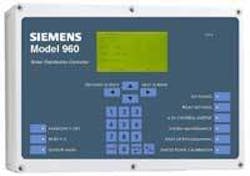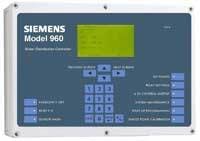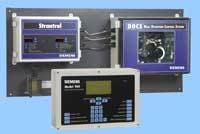System Manages Chlorine Residual in Recycled Water
San Elijo Joint Powers Authority (SEJPA) owns and operates a 5.25 mgd water pollution control facility and a 2.48 mgd water reclamation facility (WRF) co-located in Cardiff-by the-Sea, CA. Secondary effluent from the water pollution control facility, which uses activated sludge treatment, is sent either to the WRF for reuse or discharged to an ocean outfall. The reclamation facility works as a skimming plant and provides roughly 1,200 acre feet of recycled water annually to the coastal communities of Del Mar, Encinitas and Solana Beach.
In 2000, SEJPA completed constructing its WRF that included two off-site storage reservoirs and 17 miles of distribution pipelines. The $17 million project provided recycled water service to three cities and included homeowner associations, golf courses, community parks, school athletic fields, and street and highway landscaping. Many of the customers voluntarily chose to switch their irrigation systems from potable to recycled water to save on water costs and to have a drought-resistant water supply.
In 2003, SEJPA added an innovative element to its reclamation program that involved skimming secondary effluent from another regional treatment plant. This provided effluent redundancy in case one treatment plant became upset and allowed the operations staff to select the best quality effluent for reclamation. As a result, the reclamation program experienced higher quality recycled water, reduced chemical consumption, lower energy use, and reduced potable water supplementation into the system.
Unforeseen Operational Challenge
The addition of the second effluent water supply came with an unforeseen operational challenge as it significantly broadened the water quality parameters that the WRF treated. Specifically, the level of nitrification in the second source water was significantly greater than that in the original water. As a result, operations staff struggled to manage the chlorine-based disinfection system when the effluent swung in and out of nitrification.
The original chlorine residual monitoring system was an inexpensive design built around the water quality parameters of SEJPA effluent. The system included a Strantrol® 890 controller to monitor oxidation-reduction potential (ORP) of the filtered water as it entered the chlorine contact tank and a Wallace & Tiernan MICRO/2000® analyzer to measure finished water residual. The system provided automated chlorine monitoring, but chlorine-dosing control was under manual control. This meant that operations staff had to manually adjust dosing rates when adjusting filter flowrates, which was acceptable when the WRF was only processing one effluent.
By adding the second effluent, the chlorine-dosing requirement experienced significant swings due to nitrification. This forced staff to constantly monitor and adjust chlorine rates even when flowrates remained steady. Manual control of the chlorine dosing was time-consuming and sometimes led to inaccurate forecasting of chlorine demand, which required recycled water production to be slowed in order to maintain minimum chlorine residual. Even worse, the less experienced operator also had trouble predicting exact chlorine dosing rates and, as a result, had to continually make adjustments before reaching the target setting.
Designing a Solution
Needing to come up with a better system, SEJPA partnered with Siemens Water Technologies to design a solution. Working closely with SEJPA staff to understand issues and to review operational data, Siemens developed a disinfection control strategy to provide automated chlorine dosing that managed fluctuating ORP levels in the filtered water as well as changes to filter flowrates.
The first key component was to develop ORP levels for both water sources that correlated to nitrification conditions. The second component was to develop an algorithm that established the appropriate chlorine-dosing rate for a specific ORP to gain the desired finished water chlorine residual.
Upon completing this, SEJPA replaced the original chlorine monitoring equipment with the Strantrol® Dual Oxidation Control System® (DOCS). The DOCS combines High Resolution Redox® (HRR) technology with residual management to offer a fully automated disinfection and dechlorination system. The system allowed SEJPA to program ORP levels for nitrification conditions to automatically adjust chlorine-dosing rates. The Strantrol 960 micro-processor-based controller is at the heart of the system. The DOCS accepts up to three HRR channels, three residual channels and three optional pH channels for a total of nine control and monitoring inputs.
“Before the DOCS controller was installed, if chlorine residual dropped off in the finished water, we had to manually adjust the dosage,” said John Clark, chief plant operator at SEJPA WRF. “When trying to raise the chlorine residual, it was easy to overcompensate and waste a lot of chemical.
“But now, the DOCS controller automatically fine-tunes the dosing,” he said. “It’s like having another person on your team.”
Clark is also pleased that the late night calls to manually adjust the chlorine levels have ceased.
“Our lives have definitely become easier since installing the DOCS controller,” he said.
SEJPA was the first plant on the West Coast to install a Strantrol DOCS system. SEJPA personnel trained side by side with Siemens’ local manufacturer representatives and have taken ownership of the controller and the process. According to Clark, upgrading the reclamation facility’s equipment has truly been a team effort that benefits many. The facility can now effectively treat water from either source and is providing the highest quality recycled water possible to its customers.
About the Authors
Michael Thornton, P.E., is general manager of San Elijo Joint Powers Authority in Cardiff-by the-Sea, CA. Brian Doane is a former territory sales manager at Siemens Water Technologies in Ladera Ranch, CA. Brian can be reached at 949-481-4560. Mark McTaggart is a field service engineer at Siemens Water Technologies in Bradley, IL. Mark can be reached at 815-929-4177 or at [email protected]. Special thanks to John Clark, chief plant operator at SEJPA WRF, who also contributed to the article. John can be reached at 760-753-6203 or at [email protected].


